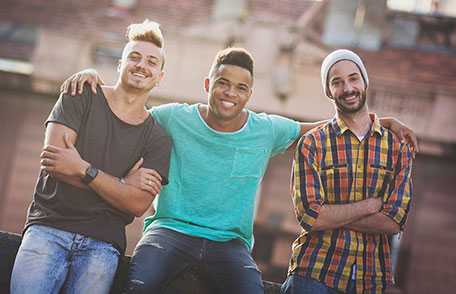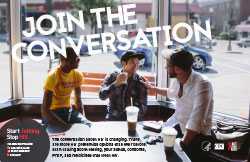National Gay Men's HIV/AIDS Awareness Day

Learn how HIV affects gay and bisexual men and what they can do to stay healthy.
September 27 is National Gay Men’s HIV/AIDS Awareness Day, a time to focus on how HIV affects gay and bisexual men and what they can do to stay healthy.
Gay and bisexual men are more severely affected by HIV than any other group in the United States. More than 600,000 of the 1.1 million people living with HIV in the United States are gay and bisexual men, and 70% of new HIV infections are among gay and bisexual men. But the latest CDC data show signs of progress: HIV infections are falling among some age and racial/ethnic groups of gay and bisexual men. With today’s highly effective treatment and prevention tools, we can speed up that progress. But we need your help.

Start Talking. Stop HIV. offers conversation starters to help gay and bisexual partners talk about HIV.
What Can Gay and Bisexual Men Do?
Learn the facts about HIV, and share this information with your partners, family, friends, and community.
Start talking. Have an open discussion with your sex partners and friends about a range of HIV prevention strategies, including testing, condoms, PrEP and treatment for HIV. Learn more from CDC’s Start Talking. Stop HIV. campaign, part of the national Act Against AIDS initiative. It has many resources to raise awareness about HIV among gay and bisexual men, including conversation starters, information about sexual health, and campaign materials such as posters, brochures, and infographics.
Get tested. Around 1 in 6 gay and bisexual men living with HIV is undiagnosed. Knowing your HIV status gives you powerful information to help keep you and your partner healthy.
- To find a testing site near you, visit Get Tested, text your ZIP code to KNOWIT (566948), or call 1-800-CDC-INFO (232-4636). You can also get a home testing kit from a pharmacy or online. Learn more about HIV testing.
Protect yourself and your partner. Today, more tools than ever are available to prevent HIV. You can
- Use condoms the right way every time you have sex. Learn the right way to use a condom.
- If you are at very high risk for HIV, talk to your doctor about pre-exposure prophylaxis (PrEP), which is medicine taken daily to prevent HIV.
- Choose less risky sexual behaviors, like oral sex.
- Limit your number of sexual partners.
- Never share needles or drug works.
- Talk to your doctor about post-exposure prophylaxis (PEP) if you think you may have been exposed to HIV within the last 3 days.
You can learn more about how to protect yourself and your partners and get information based on your needs from CDC’s HIV Risk Reduction Tool (BETA).
Get treated. If you are HIV-positive, take medicine to treat HIV as soon as possible. If taken the right way every day, HIV medication reduces the amount of HIV (viral load) in the body to undetectable levels.
Getting and staying undetectable is not only the best thing people living with HIV can do to maintain their health, but also one of the best ways to prevent sexual transmission of HIV. We now know that people living with HIV who get and stay undetectable have effectively no risk of transmitting HIV to their HIV-negative sexual partners. Additional resources for persons living with HIV are available from the HIV Treatment Works campaign.
What Can Allies Do?
As a family member or friend, you can support the gay and bisexual men in your life by addressing stigma and discrimination and talking openly and non-judgmentally about HIV. Encourage gay and bisexual men to get tested, share their HIV status, and know their options to avoid getting or transmitting HIV. If they’re HIV-positive, let them know you stand with them and encourage them to get in and stay in care so they can get the health and prevention benefits of being undetectable.
Consider volunteering at an organization that supports LGBT people or a local AIDS service organization. You can also use your voice on social media to increase awareness about HIV and combat stigma.
What Can Partners Do?
Health departments, community-based organizations, and other partners can address stigma and discrimination, extend the reach of their HIV prevention and testing services that focus on gay and bisexual men, and link HIV-positive men to care. Learn how CDC can help you.
- Page last reviewed: September 27, 2017
- Page last updated: September 27, 2017
- Content source:
- National Center for HIV/AIDS, Viral Hepatitis, STD, and TB Prevention
- Page maintained by: Office of the Associate Director for Communication, Digital Media Branch, Division of Public Affairs




 ShareCompartir
ShareCompartir